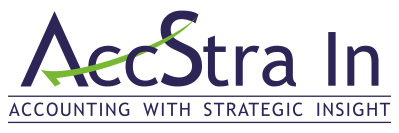The Accounts payable process is a part of the Entire P2P cycle ie Procurement to payment cycle.
From the point of purchase requisition to Goods receipt is the procurement cycle which is the first P in P2P. The 2nd P which we are going to discuss in depth is as Accounts payable cycle.
Once goods are received and GR entry is done the invoice copy is awaited -> Invoice is received and data is uploaded in the system -> 3 way/2-way matching is done -> payment is made.
Now in the above cycle we have 2 important aspects of technology one is the RPA – Robotics process automation and the other which is much more specific is the OCR continuing further in the above cycle of invoice receipt and data recognition is where the OCR which stands for Optical Character Recognition plays the vital role.
We will deliberate on the RPA in later Blogs for now let’s move towards the OCR.
Well OCR is having a disruption in the finance now but the technology is dated back to 1950’s
The first technology similar to the current day OCR is the scanner created to read the Morse code and read it aloud in the USA department of defense. The technology has ever since evolved a lot and as found varied applications today and one among them is the finance.
The above technology is revolutionary in the sense it is something similar to a human eye trying to make sense of the images and text in the invoice copy.
With such capabilities, the OCR helps in extracting images and text with predefined parameter’s and convert the same into editable and searchable data which is then stored in the Accounting software.
Thus, providing the accountants with a huge benefit to spend quality time on review and cut back on the manual coding of documents.
How and to whom does it help ?? is the most relevant question although accountants are benefited without any doubt but the major beneficiary is the management.
The other major beneficiary as mentioned specifically above is the management who are going to have a peace of mind that the data is captured and accounted accurately and hence the payments are accurate thereby working capital managed better due to lowered human interaction.
An organization receiving huge volumes of invoice is benefitted the most. More the amount of data you are hand keying into your accounting software the more benefit you can get from each page which is automated by OCR. So technically apart from Medium to Big organization the BPO stands to gain the most from their investment from automation.
Well at the end of the day your typical process should look something like below .
• Paper is prepped for scanning (unfolded, staples removed, etc.)
• Invoices are scanned on a high-speed document scanner
• Scanned invoices are recognized with OCR
• Relevant data is located using keywords & other layout elements
• Questionable fields are displayed to a data entry operator for manual verification & correction
• In advanced systems, corrected fields are used to train the template automatically so that data is captured correctly the next time
• Once all errors are corrected, data is exported directly to your accounting software’s database.
Well how does OCR Work – Something Interesting.
You would have noticed that the scanned copies are generally White and Black when there is a OCR process involved well the reason is OCR is generally a binary process it will recognizes things or it will not recognize. So, armed with the above logic OCR will recognize things which are in black and the white part is not recognized because it is considered to be a part of the background.
All OCR programs are slightly different, but generally they process the image of each page by recognizing the text character by character, word by word, and line by line. In the mid-1990s, OCR programs were so slow that you could literally watch them “reading” through and processing the text while you waited; computers are far faster now and OCR is pretty much instantaneous.
Feature detection is the way to recognize the characters in the scanned document even if it is hand written and not computer printed Eg :- You could use a rule like this: If you see two angled lines that meet in a point at the top, in the center, and there’s a horizontal line between them about halfway down, that’s a letter A. Apply that rule and you’ll recognize most capital letter As, no matter what font they’re written in.
Most modern omni font OCR programs means the programs which can recognize printed text in any font work by feature detection. Some use neural networks i.e. computer programs that automatically extract patterns in a brain-like way.
Well the future of OCR is majorly related to Neural network – The basic idea behind a neural network is to simulate (copy in a simplified but reasonably faithful way) lots of densely interconnected brain cells inside a computer so you can get it to learn things, recognize patterns, and make decisions in a human like way. The amazing thing about a neural network is that you don’t have to program it to learn explicitly: it learns all by itself, just like a brain!
[wpforms id=”1588″ title=”false” description=”false”]
